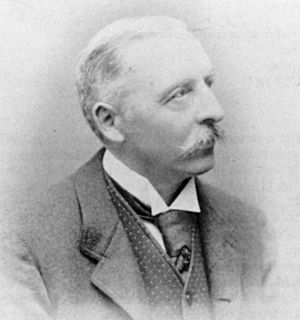Henry Wemyss Feilden facts for kids
Colonel Henry Wemyss Feilden (born October 6, 1838 – died June 8, 1921) was a British Army officer, an Arctic explorer, and a naturalist. A naturalist is someone who studies nature, including plants and animals. He was also honored with the Order of the Bath, a special award for service.
Contents
Who Was Henry Wemyss Feilden?
Henry Wemyss Feilden was born in Ireland. His father was Sir William Henry Feilden, a baronet (a special title in Britain). Henry went to school at Cheltenham College.
Early Life and Military Career
When he was 19, Feilden joined the Black Watch, a famous British Army regiment. He fought in the Indian Mutiny in 1857-58 and in China in 1860.
In 1862, he decided to join the Confederate States Army during the American Civil War (1861–1865). He served as an assistant general until the war ended.
After the American Civil War, he returned to the British Army. He became a captain in the Royal Artillery in 1874. He also served in the First Boer War in 1881 and again in Africa in 1890. Later, during the Second Boer War, he helped manage payments for the army. He received awards for his service in India, China, and South Africa. He was given the Companion of the Order of the Bath (CB) award in 1900 for his work.
Explorer and Naturalist
Besides his military career, Feilden was very interested in nature. He collected information about the geology (rocks and earth), flora (plants), and fauna (animals) of new places. He joined Sir George Nares' British Arctic Expedition in 1875-76 as the naturalist on the ship HMS Alert.
While serving in Pegu, he wrote notes about the birds there for another naturalist, Allan Octavian Hume. Feilden was also a good friend of the famous writer and poet Rudyard Kipling.
Later Life and Discoveries
In 1864, Feilden married Julia McCord. In 1880, Feilden moved to Wells-next-the-Sea in Norfolk, England. He joined the Norfolk and Norwich Naturalists' Society and became its President in 1885. He lived in Norfolk for over 20 years. One interesting discovery he made in 1888 was a stuffed specimen of the Great Bustard, a large bird that had been shot in Norfolk.
Feilden wrote many scientific papers for journals like The Zoologist and Ibis, which is a journal about birds. He was elected to the British Ornithologists' Union in 1873.
In 1895 and 1897, Feilden went on more expeditions to places like Novaya Zemlya, Kolguyev, Spitsbergen, Lapland, and the Kara Sea. He explored these areas with Henry John Pearson.
Feilden was a Fellow of the Royal Geographical Society, which means he was recognized for his contributions to geography and exploration. He was also considered for the Royal Society of London, a very important scientific group. Even though he wasn't chosen, his nomination showed how important his work was. He was recognized for his valuable observations and collections of animals and plants during the Polar Expedition. He also studied the geology of Smith Sound and found ancient plant fossils in Grinnell's Land. These discoveries helped scientists understand the history of life in the Arctic.
Feilden passed away at his home in Burwash in 1921, at the age of 83. His wife, Julia, had passed away about a year before him. They did not have any children.
His Writings
- Nares, G.S., Feilden, H.W., 1878. Narrative of a Voyage to the Polar Sea During 1875-6 in H.M. Ships Alert and Discovery. Feilden wrote sections on the people, mammals, birds, and geology in this book.


